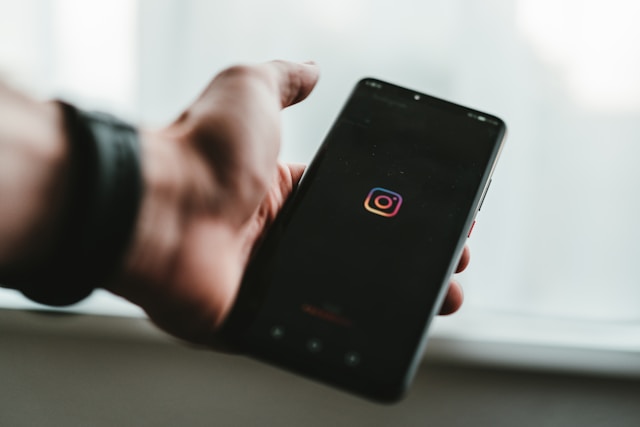Instagram has grown into one of the most popular social media platforms in the world. While it’s a place to share moments, connect with others, and express creativity, it can also become a space where users encounter abuse, harassment, or inappropriate content. That’s why it’s important for every user to know how to report abuse on Instagram and understand the tools available for protecting themselves and others.
Whether you’ve experienced cyberbullying, seen hateful or explicit material, or simply want to keep your feed clean, this guide will walk you through the Instagram reporting process step by step.
Why Reporting Matters on Instagram
Instagram’s community thrives when users feel safe, respected, and heard. The platform has clear community guidelines designed to protect users from harm and maintain a positive environment. By knowing how to report inappropriate content on Instagram, you contribute to that effort.
Reporting doesn’t just help remove harmful content it also signals to Instagram that certain behaviors or accounts may need further monitoring. It’s a way to take action when blocking alone isn’t enough.
What Counts as Abuse or Inappropriate Content?
Before you report something, it’s helpful to know what Instagram considers a violation. Here are the most common types of content that can be reported:
1. Harassment and Bullying
-
Repeated unwanted messages
-
Name-calling, threats, or intimidation
-
Targeted abuse or humiliation
2. Hate Speech and Threats
-
Comments or content attacking someone based on race, religion, gender, sexuality, or nationality
-
Violent threats or promotion of terrorism
3. Sexual Content and Nudity
-
Explicit images or videos
-
Pornographic content or sexual exploitation
-
Inappropriate messages or solicitations
4. Misinformation or Harmful Content
-
Fake health advice
-
Conspiracy theories that can lead to harm
-
Encouragement of self-harm or dangerous behavior
5. Spam or Scam Activity
-
Fake giveaways
-
Phishing attempts through links or DMs
-
Duplicate comments or deceptive profiles
If you come across any of this, you can and should use the Instagram reporting process to flag it.
How to Report a Post, Story, or Comment on Instagram
Reporting content is straightforward, and you can do it directly from your feed or profile. Here’s how:
Reporting a Post:
-
Tap the three dots (…) in the top-right corner of the post.
-
Tap Report.
-
Choose the reason you’re reporting (e.g., harassment, nudity, violence).
-
Follow the prompts and submit.
Reporting a Story:
-
Tap the three dots in the top-right corner of the story.
-
Tap Report.
-
Choose a reason and complete the process.
Reporting a Comment:
-
Swipe left on the comment (iOS) or tap and hold (Android).
-
Tap the exclamation icon (!) or Report this comment.
-
Choose a reason and submit your report.
How to Report a User or Account
Sometimes the problem isn’t just one post it’s the entire account. Here’s how to report an Instagram account:
-
Go to the profile of the person you want to report.
-
Tap the three dots (…) in the top-right corner.
-
Tap Report.
-
Select It’s inappropriate, then choose a reason (e.g., pretending to be someone else, posting harmful content).
-
Complete the report submission.
If you’re unsure whether to block or report, consider doing both. Blocking will prevent the user from contacting or seeing your profile, while reporting will alert Instagram to potential violations.
What Happens After You Report?
When you report content or a user, Instagram reviews it against their community guidelines. Most reports are reviewed within 24–48 hours, though response time may vary based on severity and volume.
You’ll receive a notification once Instagram has taken action, whether that means removing content, disabling an account, or determining that the content does not violate policies.
Reporting is anonymous, so the person you report will not know it was you. This makes it safer to speak up when you see something wrong.
Additional Safety Features You Can Use
Beyond reporting, Instagram offers a variety of features to help you control your experience and stay safe.
Blocking
Stops someone from viewing your content or sending you messages.
Restricting
Limits interaction from a user without alerting them. Comments become visible only to them, and DMs go to your request folder.
Muting
Allows you to stop seeing posts or stories from someone without unfollowing them.
Comment Filters
Automatically hide offensive or spammy comments on your posts.
Message Controls
Decide who can message you, who goes to message requests, and who is blocked entirely.
All of these tools work alongside the Instagram reporting process to give you more control over your experience.
Conclusion:
It’s never okay to feel threatened, harassed, or uncomfortable on a social platform. Knowing how to report abuse on Instagram empowers you to take control and protect yourself and others. Whether it’s a single offensive comment or a pattern of abuse, your report can help create a safer, more respectful community for everyone.








